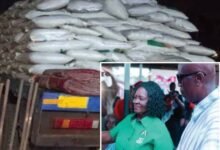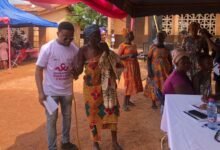
A total of 33,180 children from some cocoa communities in the country are at risk of becoming child labourers, according to a Child Labour Monitoring report by Child Rights International (CRI).
Out of the number,64.1 percent are males with the remaining 35.9 per cent being females.
These came to light during the launch of Child Labour Monitory System Report (CLMSR) carried out by CRI from August 2020 to December 2021.
The survey was conducted in seven regions which included, Ahafo, Bono, Ashanti, Eastern, Central, Western and Western North.
The 60-page report also stated thata total of 11,522 representing 22.5 per cent of children were engaged in hazardous child labour with a higher proportion of male children being 25.5 per cent and 19.5 per cent female.
The report is intended to provide adequate information on child labour to support planning of intervention for community development and welfare of children in such communities.
Presenting the report in Accra yesterday, the Executive Director of CRI, Mr Bright Appiah, said the survey was designed to determine the prevalence rate of child labour in some cocoa farming communities in seven regions.
He said the study focused on the percentage of children engaged in child labour, hazardous child labour, children at risk of child labour and those engaged in worst form of child labour.
Mr Appiah said about 48.7 percent of children between the ages of 5-17 years had been engaged in economic activities and in the past year before the survey.
Furthermore, the results of the survey revealed that 23. 3 per cent of children were engaged in cocoa farming in the past year before the survey and 28.1 percent of children were engaged in domestic chores.
According to the report, two out of every 10 children (22.5 per cent) were engaged in hazardous child labour activities which might be harmful to their health, safety and wellbeing.
“A high proportion of children (19.3 per cent) are engaged in hazardous child labour in cocoa value chain. Also, the result shows that 64.8 percent of children are at risk of child labour in its worst form,” Mr Appiah indicated.
He said the data comprised 191,426 household members who are domiciled in 44,699 households with an average household size of 4.28 in cocoa growing communities.
“According to the findings, the female household members constitute 50.5 per cent more than their male counterpart with 49.5 per cent,” he said.
Mr Appiah said the result of the survey indicated that some of the children who were engaged in both economic and non-economic activities were adversely affected in terms of their education and health.
In a speech read on his behalf, Mr Ignatius Baffour-Awuah, Minister of Employment and Labour Relations, said the Ministry had formulated a draft on public private framework for action and jointly put measures in place to eliminate child labour in cocoa growing areas.
He was optimistic that the framework would deepen collaboration between government and its partners to reach out to the vulnerable.
He said the ministry in 2010 designed the Ghana Child Labour Monitory System Report (GCLMSR) as a means of monitoring incidents of child labour in the country.
The Minister commended CRI for the commitment shown over the years in tackling child-related issues.
The CLMSR recommended that government should co-ordinate planning, implementation and response to child labour activities in the cocoa sector.
It also suggested that regulatory bodies must ensure compliance with existing laws aimed at curbing child labour.
BY AGNES OPOKU SARPONG








